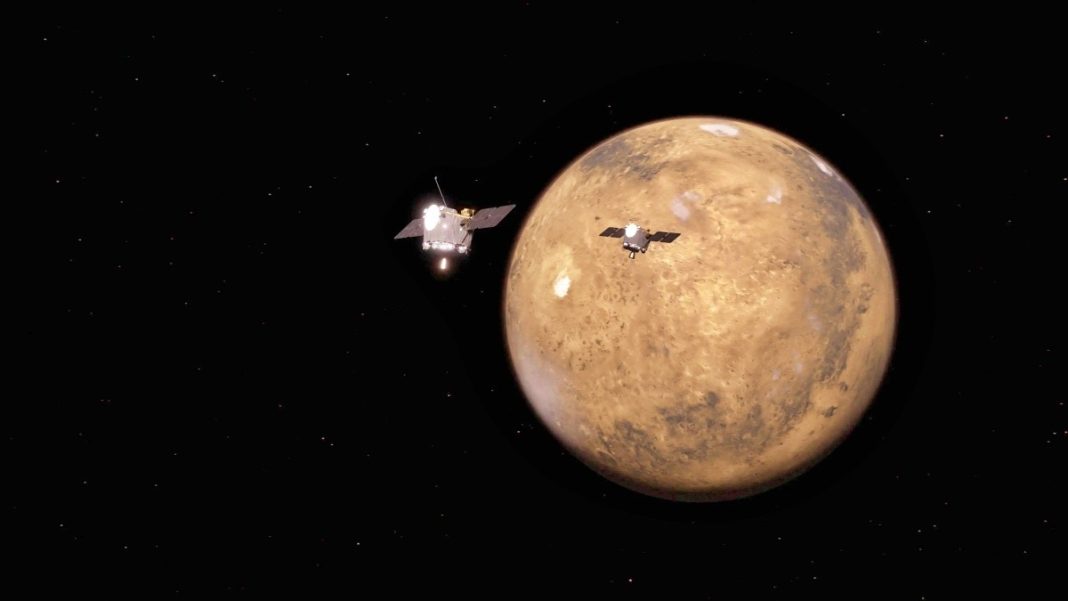NASA is launching its innovative twin-spacecraft Escapade mission to Mars on November 9, 2025, to study how the Red Planet lost its atmosphere. The mission, flying aboard Blue Origin’s New Glenn rocket, marks a significant step in preparing for future human missions to Mars.
Key Takeaways
- Twin spacecraft to launch November 9, 2025, arriving at Mars in September 2027
- First NASA two-spacecraft orbital science mission to Mars
- Mission cost under $80 million – less than a fifth of previous Mars orbiters
- Will study Mars’ magnetosphere and atmospheric loss mechanisms
What is the Escapade Mission?
Escapade (Escape and Plasma Acceleration and Dynamics Explorers) consists of two identical spacecraft nicknamed Blue and Gold. Built by Rocket Lab and managed by UC Berkeley’s Space Sciences Laboratory, this represents NASA’s first dual-spacecraft orbital science mission to Mars.
After launching from Cape Canaveral, the probes will spend approximately one year orbiting Earth’s L2 libration point, conducting space weather observations. They will then begin a 10-month journey to Mars, arriving in September 2027.

Unprecedented Mars Science Operations
Upon arrival, the twin spacecraft will conduct an 11-month science mission using complementary orbits. Initially flying in the same elliptical orbit with one following the other, they will capture the time evolution of Mars’ magnetosphere.
Later, the spacecraft will separate into different orbital planes to simultaneously study spatial variations around the planet. This dual-measurement approach provides the first real-time, three-dimensional picture of how solar wind particles interact with Mars’ magnetic environment and strip away its atmosphere.

Solving Mars’ Climate Mystery
Understanding atmospheric escape is crucial for explaining how Mars transformed from a watery world to the cold, arid planet we observe today. Escapade’s measurements will reveal how Mars’ hybrid magnetosphere guides particle flows and controls energy exchange between solar wind and the atmosphere.
This research provides essential insights into planetary habitability and atmospheric evolution, valuable for understanding terrestrial planets throughout the universe.
Cost-Effective Planetary Science
As part of NASA’s SIMPLEx program, Escapade demonstrates a new approach to planetary exploration with smaller, lower-cost missions and higher risk tolerance. At under $80 million, the mission costs less than one-fifth of similar past Mars orbiter projects while delivering significant scientific returns through innovative design and commercial partnerships.
Blue Origin’s New Glenn Milestone
The mission serves as an important validation for Blue Origin’s heavy-lift launch capabilities. Following successful static fire tests of its seven BE-4 engines, New Glenn will attempt a first-stage landing on a drone ship during this launch.
This marks NASA’s first interplanetary mission aboard New Glenn, highlighting the expanding role of commercial launch vehicles in deep space exploration.
By providing simultaneous, multi-point observations of Mars’ magnetosphere and solar wind interactions, Escapade’s twin spacecraft will fundamentally advance our understanding of atmospheric loss processes, taking critical steps toward solving the mystery of Mars’ climate evolution while demonstrating more affordable approaches to planetary science.






